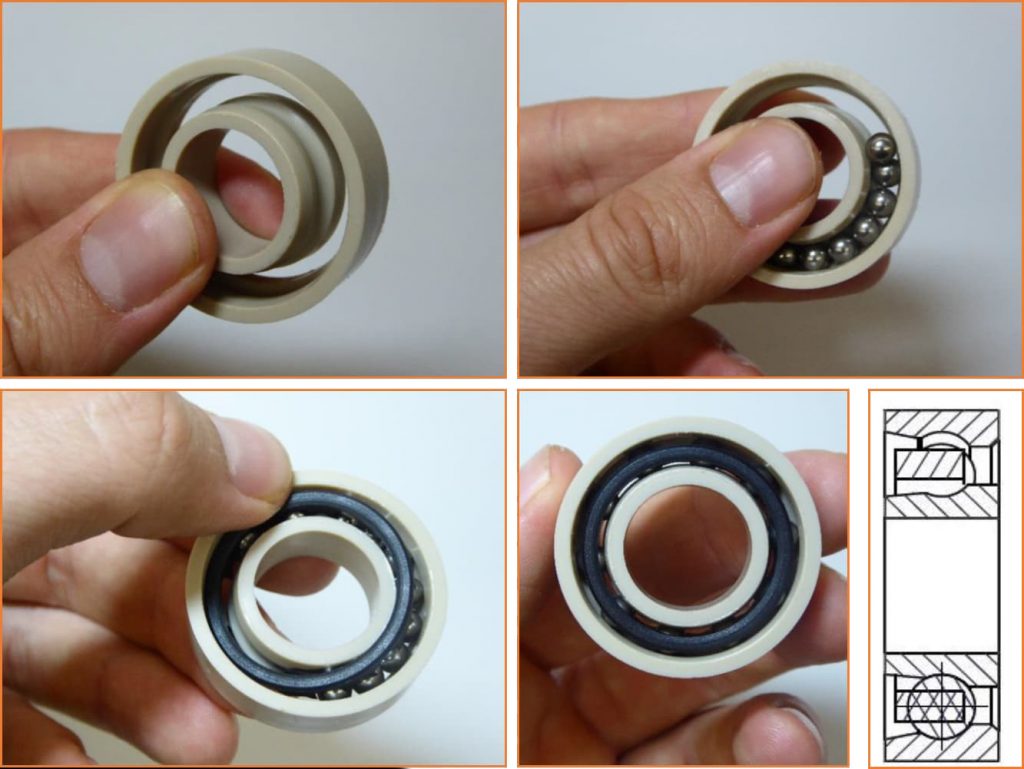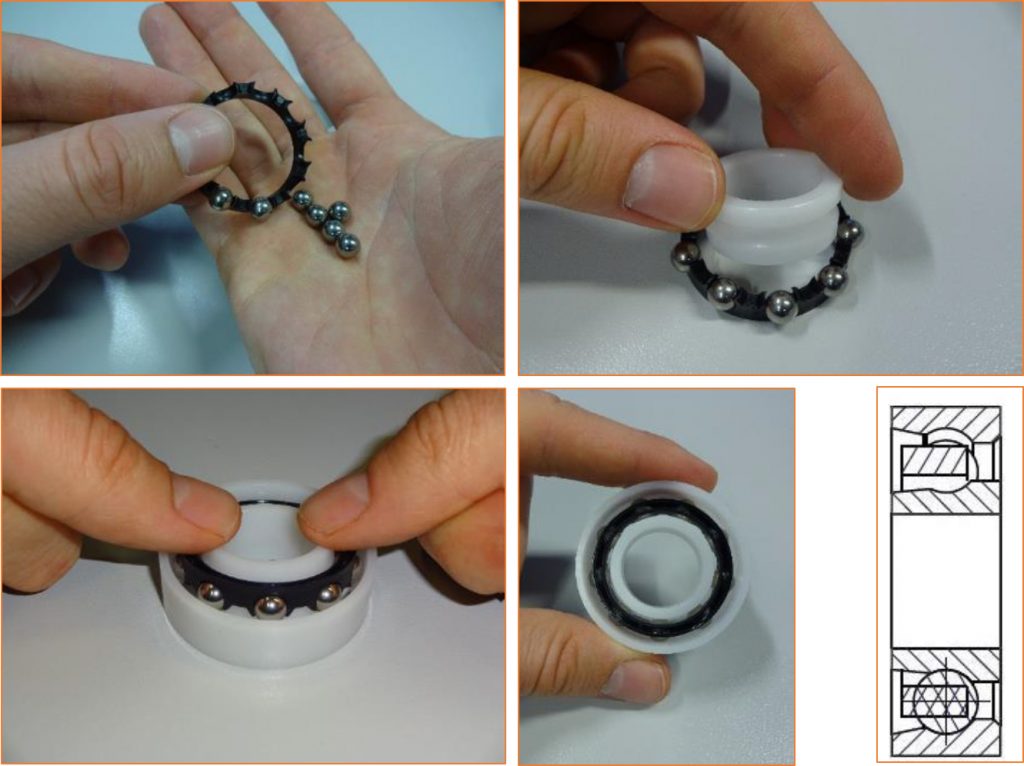How do the balls get into the ball bearing?
Patrick Czaja | 14. April 2020
Ball bearings consist of an inner and outer ring, a cage and rolling elements. The cage is used to separate the rolling elements from each other in the form of balls. If the balls were not separated, they would run against each other and overheat. With high rotational speeds and friction of the balls, destructive effects are the result. But how do the balls get into the ball bearing now?
Option 1:
When looking at a radial deep groove ball bearing according to DIN 625, this question is easy to answer as they have conspicuous indentations on the inner and outer rings. If the inner and outer rings are displaced to the respective indentations, the balls can easily be filled into the grooves and secured with the cage. Here the cage takes over the function of keeping the balls from falling out.
Option 2:
Unusual, but practised in the industry, is also heating of the outer ring and the cooling of the inner ring in smaller metal bearings up to miniature designs. The balls and cages can be easily inserted into the space created between the inner and outer ring. If the ring materials contract or expand again, the ball bearing has reached its standard dimensions and all balls are in place. For igus, only the first possibility comes into question, but there are others that are illustrated below.
How do the balls get into the ball bearing at igus?



